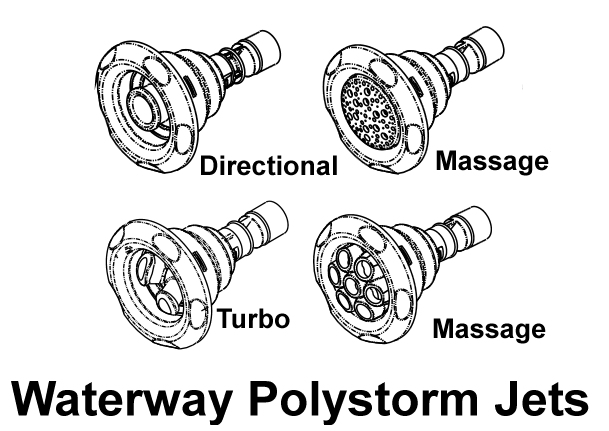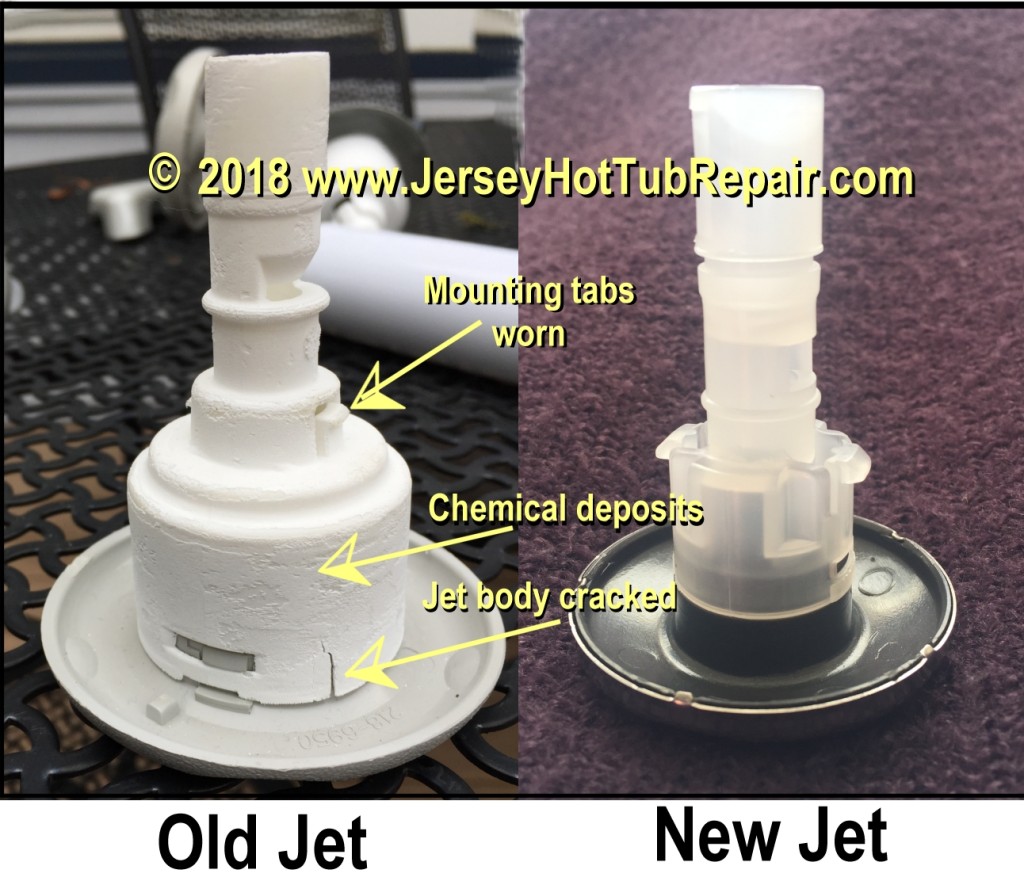One important fact to remember about hot tub jets is that they are purely mechanical devices, and not very complex either. 99% of the jets used in hot tubs are plug-in nozzles that churn up the high pressure water flowing through them, creating a pleasing massage for the user.
Some hot tub jets can be aimed; those are called “directional” Many jets have internal baffles that cause them to rotate. These are generally called “roto jets.” Another type of jet has multiple holes to create many tiny streams of water. These are known as “massage jets.”
Regardless of the type of jet, they all consist of a tube that water is pumped into, and a face that the water comes out of.
Your jets do not spend their lives in isolation, however. As they soak in your hot tub, year after year, whatever goes into the water affects them. Algae, hair conditioner, makeup and sanitizing chemicals all collect on the hot tub jet bodies.
It turns out that the same chemicals that keep your hot tub clean are also responsible for the wearing out of your jets.
The biggest offender for premature jet failure is chlorine. In addition to killing microbes and dissolving organic material, chlorine causes the plastic in the jet bodies to become brittle. Brittle plastic breaks, which is why the jets pop out of the tub wall.
Examine this photo, comparing a new jet to an old jet that popped out of a hot tub. Notice that the mounting tabs on the old jet are worn down. Those two little tabs are what hold the jet into the wall. It doesn’t take a lot of damage wear the tab out to the size that it won’t hold the jet in place.
Admittedly, it’s a little difficult to see the wear on the tabs, especially if you have one hot tub and examine your jets once every few years. The next two common signs of chemical deterioration are cracks in the jet body, and chemical deposits on the plastic.
Some people use an ounce or two of a hot tub chlorine formulation known as “Dichlor” every two weeks. That’s not excessive, and it’s not going to harm your jets. Other people use a weekly regimen of swimming pool chlorine, which is going to harm the hot tub plastic. Whatever you do, don’t put swimming pool chlorine into a hot tub. Swimming pool chlorine is formulated for 80 degree water, not 100 degree water. If you own a swimming pool, it may seem easier to only have one bottle of chlorine instead of two, but when the day comes that you need to replace fifty jets in your hot tub and they cost $10 each, the ease of one less bottle of chemicals will be quickly forgotten.
A common form of disinfection is bromine tablets. If you use a floating dispenser, make sure you read the instructions on your bromine tablets and use only the suggested amount. It wouldn’t be a bad idea to try using less than the suggested amount. For example, if you’ve been adding four new tablets every week, try reducing your usage to three tablets and see if the water quality is just as good. If it is, try two. Your hot tub plastic, your lungs, and your skin will thank you.
Most hot tub jets will eventually wear out, and it wouldn’t be unusual to replace all the jets at least once over the 20 year lifespan of a well cared for hot tub. But too much chlorine or bromine will wear your jets out faster. The best way to avoid premature jet failure is to avoid chlorine and bromine. Ozonators and non-chlorine sanitizers are available to keep your water clean without damaging the jets. For a good overview of non-chlorine and non-bromine water treatments, check out our article entitled “The Value of an Ozonator.“
For more information or to schedule a service call to resolve your hot tub problems, contact us at 201-897-7900 or 732-894-4494. You can also reach us by email through this link.



